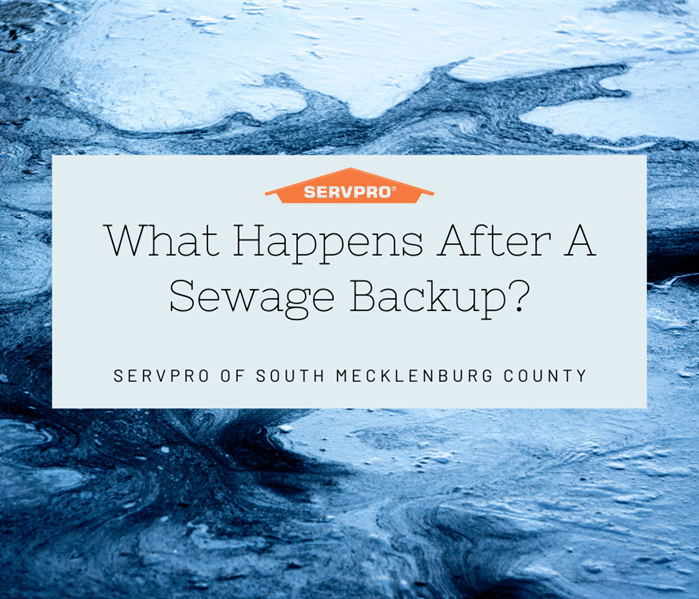What Happens After A Sewage Backup
3/31/2021 (Permalink)
A toilet overflow is horrible enough, but if a clogged pipe causes a sewage backup, it is a much bigger deal. In addition to a plumbing bill and water damage, sewer water is also extremely unsanitary. In order to avoid even more damage, it is best to get the cleaning process started immediately. With sewage backups, we never recommend doing it yourself. Exposing yourself to category 3 water can be very dangerous and not following proper protocol can mean your home does not get properly cleaned. In the case of a sewage backup, always call SERVPRO of South Mecklenburg County. When we begin the cleaning process this is the typical checklist:
- Wear Personal Protective Equipment (PPE)
It is absolutely essential to wear PPE while handling the raw sewage cleanup process. Always wear rubber boots, coveralls, gloves, a respirator and goggles.
- Shut Off Utilities
Utilities must be shut off before any work begins. Water, gas and electricity should be shut off to the area. Always let a professional do this if it is in a dangerous area.
- Extract Standing Water
If there is standing water it is essential to get the water out quickly and safely. A wet/dry vacuum is often the best method to remove standing water and any other debris.
- Remove Contents
Once utilities have been shut off and water has been removed, belongings should be removed as well. Salvageable items will be separated from unsalvageable items. Anything that cannot be thoroughly cleaned and sanitized and entirely dried within 48 hours should be disposed of. Carpet and upholstered furniture are generally unsalvageable in these types of disasters. Drywall also usually has to be cut out and replaced.
- Clean And Disinfect
Using a detergent we will clean the area as thoroughly as possible. Every crevice and area where water may have splashed will be cleaned. Once the entire affected area has been cleaned, we will then use a sanitizing solution to disinfect everything the water may have touched.
- Dry
The final step of the process is to dry the area. It is always best to have the area completely dry within 48 hours as mold can grow quickly. Our technicians will use dehumidifiers and fans to remove any remaining humidity.
If your Charlotte, NC, home or business sustains category 3 water damage, call SERVPRO of South Mecklenburg County immediately to avoid extreme damage.
Want to know more about us? Please check out our other pages:





 24/7 Emergency Service
24/7 Emergency Service
